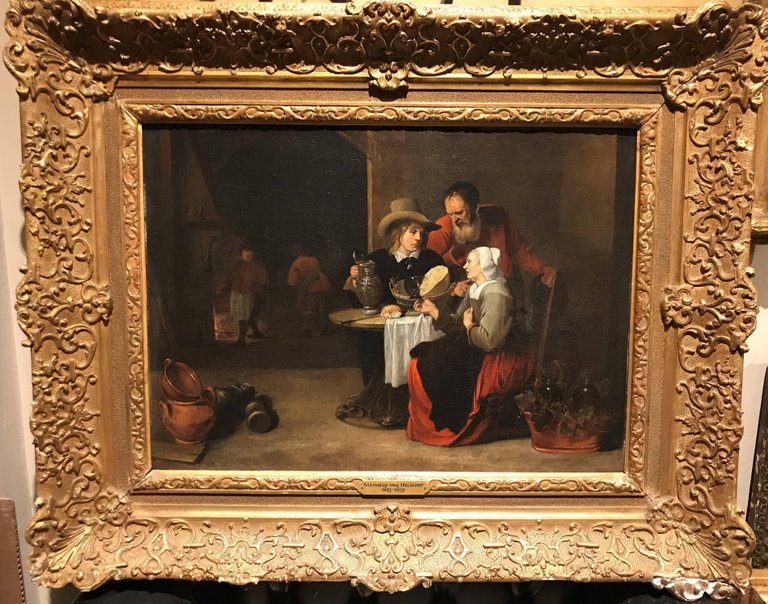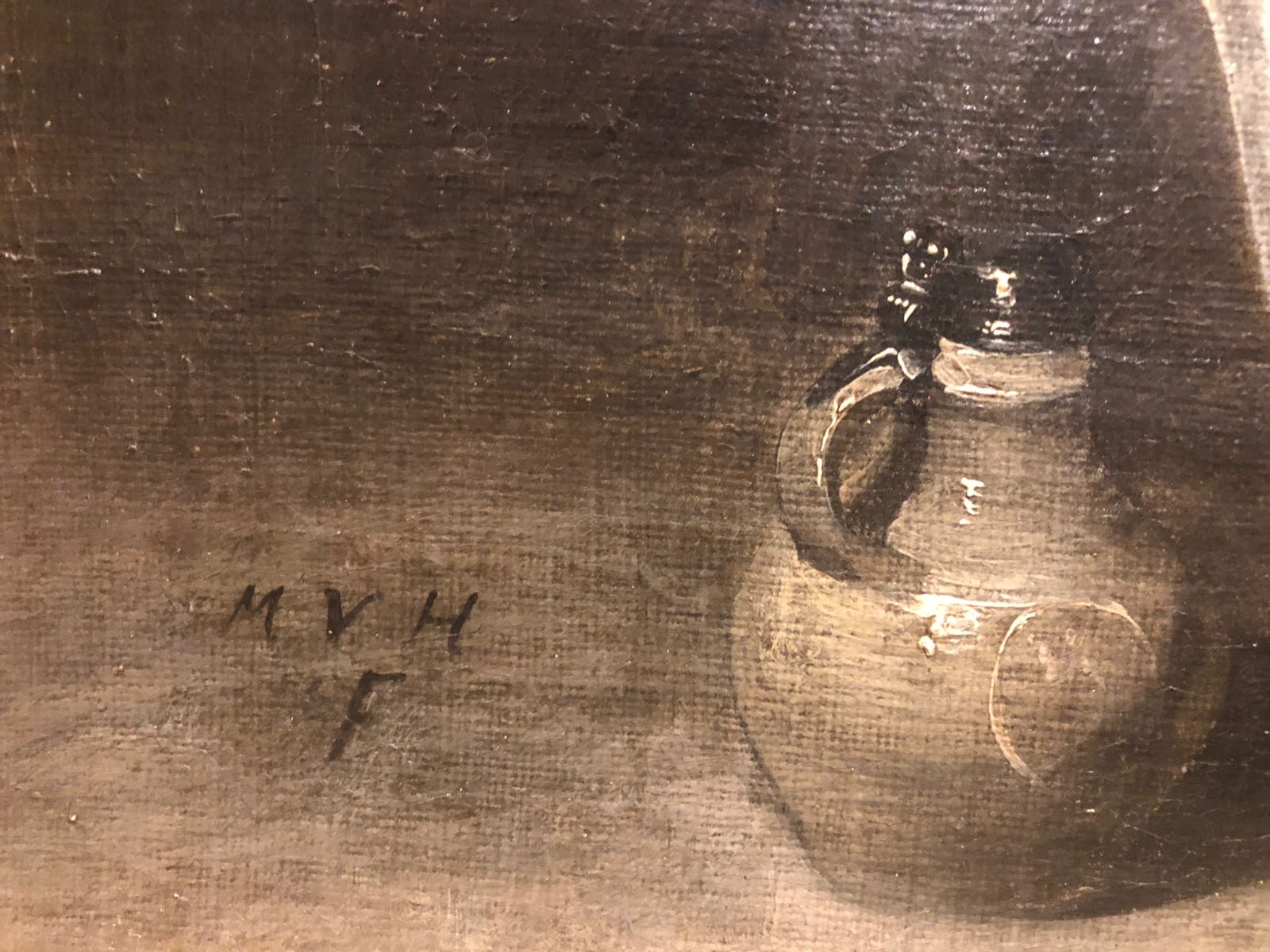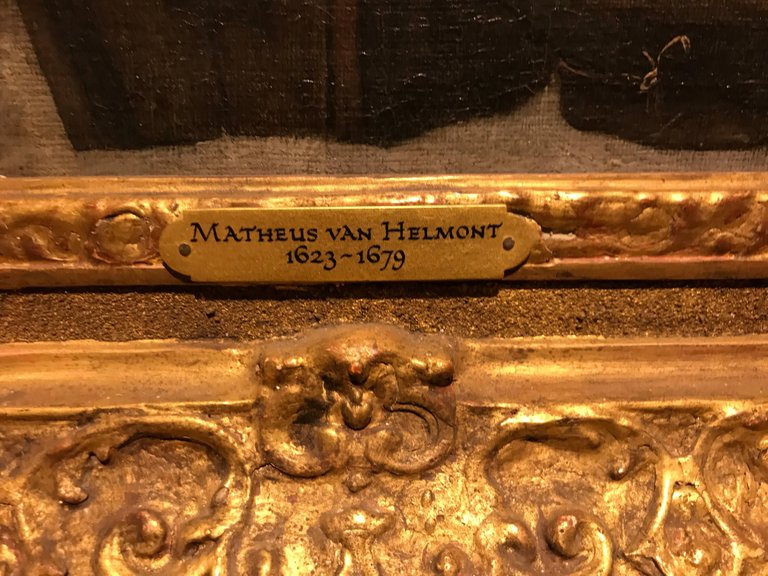Mattheus von HELMONT (1623-1685)
Pair of Cardplayers & Merrymaking
One signed in monogram "M. V. H."
Cardplayers
oil on canvas
15 1/2 x 21 1/2 inches
25 x 31 inches, inc. frame
Merrymaking
oil on canvas
15 1/2 x 21 1/2 inches
25 x 31 inches, inc. frame
Price: £30,000 GBP
As in this pair, Van Helmont is most well-known for his genre scenes and depictions of Flemish peasant life in the 17th Century. After working in Antwerp at the beginning of his career, the artist moved to Brussels before 1674. Van Helmont was initially influenced by the work of David Ryckaert III (1612-1661) and David Teniers the Younger (1610-1690).
Genre painting
By the time the French Royal Academy of painting and sculpture was founded in 1648, the hierarchy of arts was firmly established and upheld by critics throughout Europe, who ranked paintings according to their subject matter. Still-life painting ranked lowest, as it relied primarily on direct observation and skill, and history painting ranked highest, as it was believed to require imaginative genius for its execution. Occupying the huge middle rung was the form known today as genre painting, but which then lacked a general term.
Despite their middling status in contemporary theory, these were produced in great quantity. They often fetched large sums and were collected by bakers, burghers, and princely patrons alike.
The foundations of genre painting in Europe were laid most remarkably by the great Flemish painter Pieter Bruegel the Elder (ca. 1525–1569) in the sixteenth century. Bruegel’s inhabited landscapes and scenes of peasant life are lively and unsentimental depictions of common occurrence, such as weddings and village fairs. Often pointedly critical of human folly, as in works illustrating ever-popular proverbs and moral sayings, Bruegel’s oeuvre had great appeal to collectors and great influence on later artists, who prized his observational powers, humanistic approach, and the ‘lesson’ or witty commentary often contained in his works.
Through its Golden Age in the seventeenth century, genre painting in the Low Countries remained richly diverse in both style and subject as artists achieved new heights of technical refinement and an often superb evocation of mood.






